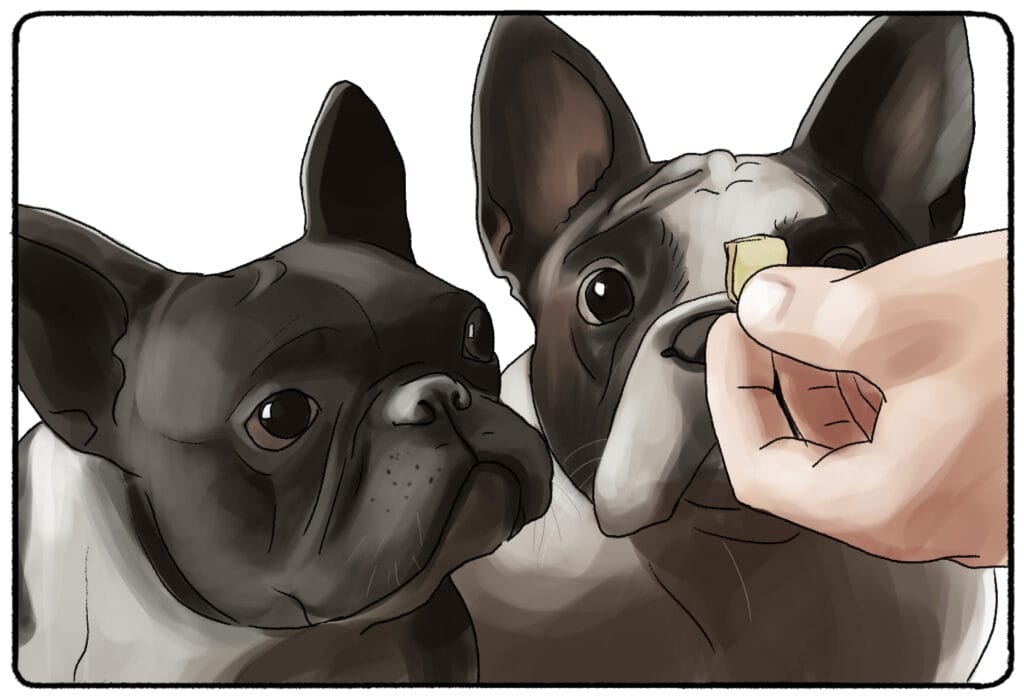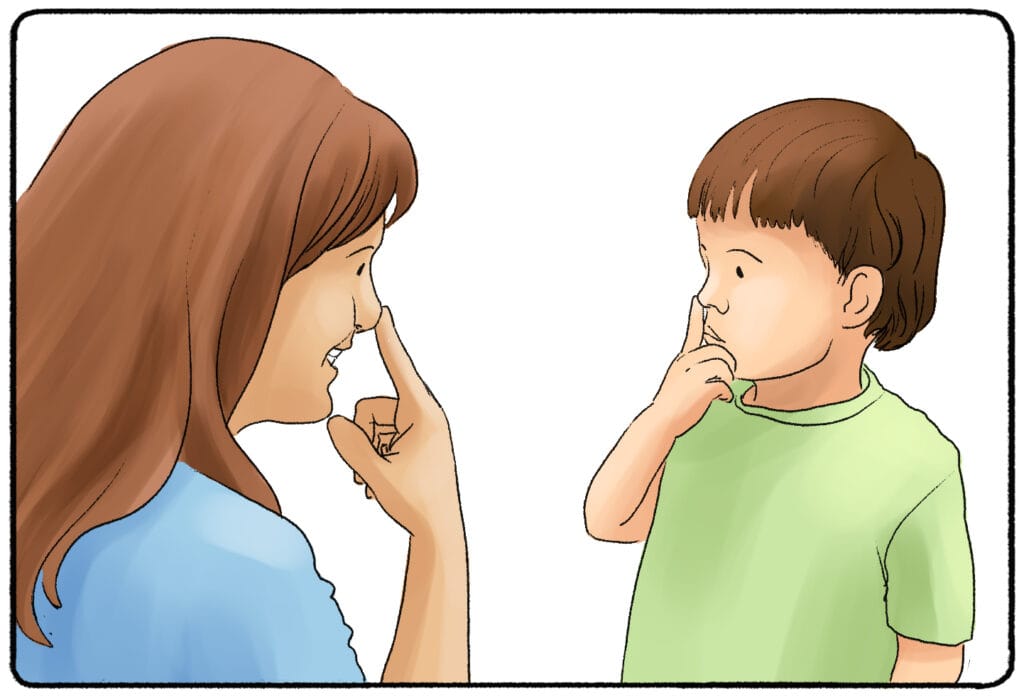Social learning theory is the idea that people and other animals can learn from the example of others. This means that, when we can see what others around us do and observe the consequences of those actions, we then expect that we will receive similar consequences if we imitate those actions.
If you see someone get punished for something they did, you know not to do that, since you will expect the same punishment to come to you if you do. Conversely, if you see someone get rewarded for something, you will do that thing with the expectation of receiving the same reward. This allows you to learn what to do more quickly and effectively than you would through trial and error.
Social learning theory is also referred to as “observational learning” and “social cognitive learning.”
Training a Dog

If you’ve ever tried to train a dog, you may have noticed that it’s easier when you already have other trained dogs around, because your new dog can copy what it sees the other dogs doing. This is observational learning.
When you don’t have other dogs around, your dog will exhibit incremental learning, or trial and error learning. When you tell your dog to sit, it will not do anything. That seems to disappoint you and doesn’t earn it a reward, so the dog will try something else, such as sniffing the air or wagging its tail. The dog will continue to try doing things until it randomly sits down and suddenly receives praise and a treat.
Incremental learning is rough because it’s very confusing for the dog. The dog may not even realize that sitting down was the reason it received the reward, and so it will have to randomly do that a few more times before it is able to correlate sitting down with getting a reward. And then, if you ask the dog to do a different trick - such as laying down - the dog will simply sit and expect a reward. When it doesn’t receive the reward, the confusion ensues again and the trial and error method restarts.
This is very different if you already have dogs that know how to do the tricks. When your new dog sees other dogs get rewarded for sitting and laying down based on your commands, it can mimic them with the expectation of receiving the same reward. This makes learning occur faster. This also makes the learning process less stressful or confusing for the dog.
Who Uses Social Learning?
As the name would imply, social learning is a social thing. Dogs and humans both learn well using this technique because they are both social creatures - dogs and wolves like to live together as part of a pack, and humans like to live together as part of a tribe or a family.

What’s Necessary for Social Learning?
There are four things that need to happen in order for social learning to occur and be effective:
- Attention - The learner needs to notice what someone else is doing.
- Retention - The learner must be able to remember what was observed when given the opportunity to act.
- Production - The learner must be given the opportunity to act.
- Motivation - The learner must expect some sort of reward for performing an action in line with what was observed.
Social Learning in Human Education
Now that you know about social learning theory, you may have realized that your teachers utilized it when teaching you how to behave in school. Teachers often say things and create situations where all four steps of social learning are satisfied:
- Attention - “Notice how the older students are always being quiet and respectful when in the library.”
- Retention - “We’re going to the library today - remember how the older students were so quiet? I want all of you to do that as well.”
- Production - Bringing the students to the library so they can apply what they learned and be quiet and respectful like the older students were.
- Motivation - Punishing students who are too loud with shushes and warnings while rewarding students who are quiet and respectful with candy.
The Model
The “model” is simply the “someone else” that is being observed and mimicked during observational learning. You may have noticed that the teacher in the above example encouraged the students to use older students as their model. There is a reasoning behind that, as models must fit into certain requirements to be effective for social learning.
Here are the main requirements that must be fulfilled for a model to be followed:
- Status - We desire higher status, so we want to follow the example of people with a higher status than us. Older students in older grades are considered to be of high status to younger students.
- Similarity - We want to follow models who are similar to us. An older student is a good model because the younger students can relate to them as a fellow student.
- Reasonable Actions - We will not even attempt to copy behaviors that seem unreasonable or outside of our skill set. Older students being quiet seems within reason for a younger student to consider mimicking.
- Perceived Competence - We need to think that our model is competent, or we will not want to mimic them. Since older students have succeeded in advancing to a further grade, younger students will consider them competent.
- Observed Consequences - As stated earlier, social learning requires an observation of both an action and a consequence for that action. Observing that older students get to have more privileges will make younger students want to act like them. Observing older students being shushed if they talk in the library will make younger students want to remain quiet to avoid that punishment.
- Noticeable - As stated earlier, social learning requires the “Attention” step, which is simply noticing the model in the first place. If the younger students were not able to observe the older students in the first place, how would they be able to mimic them?
Social learning theory is the idea that humans and other social creatures can learn things quickly and efficiently by imitating the example of others.
If you would like to learn more about how your brain works, consider checking out some more articles on PracticalPie.com or watching some of the captivating videos on the Practical Psychology YouTube channel!
References
"Arnold! | Adrian Fallace | Flickr." 30 Mar. 2014, https://www.flickr.com/photos/69187071@N02/13506595904. Accessed 16 Apr. 2019.
"Classics in the History of Psychology -- Bandura, Ross, & Ross (1961)." https://psychclassics.yorku.ca/Bandura/bobo.htm. Accessed 16 Apr. 2019.
“Social Learning Theory | Andrew Johnson - Academia.edu." https://www.academia.edu/8505394/SOCIAL_LEARNING_THEORY. Accessed 16 Apr. 2019.
